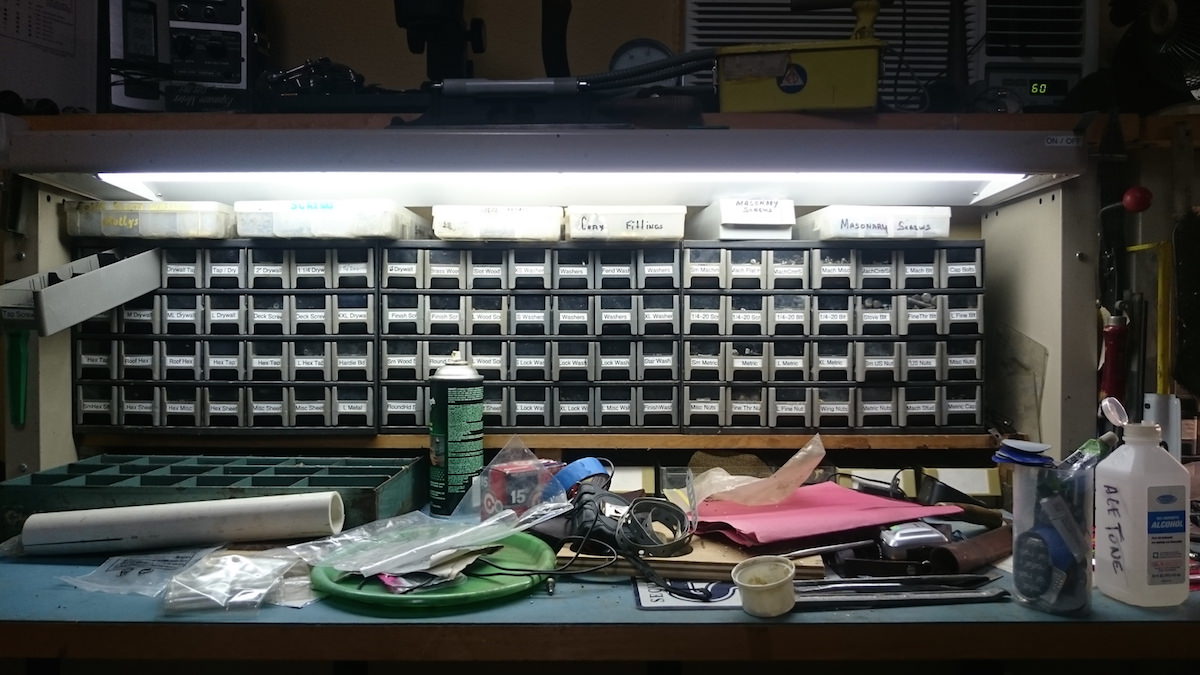
NOTES AND NEWS
Environmental vs local sources of building vibration
Floor vibrations in labs aren’t uniform across the spectrum. But what governs how much energy we see at different frequencies in the spectrum? Different kinds of sources contribute to or even dominate different parts of the spectrum. The first and most obvious distinction between different "kinds of sources" is local vs. environmental. What is interesting about this differentiation is the degree of control that might be exerted over those sources.
Floor vibration: how fast do people walk in buildings?
When it comes to footfall vibrations created by people walking around in sensitive buildings like labs or hospitals, all sorts of the parameters and variables we care about are distributions rather than singular numbers. One of these is the walker speed, expressed in paces-per-minute (ppm).
Can we isolate this microscope from floor vibrations?
For projects that house sensitive instruments and activities – like nanotech labs or vivariums – vibration and noise impacts from the outside world can interfere with research productivity. Since there's only so much you can do about the environment, we are often asked about local vibration isolation systems that act right at the tools themselves. From a technical perspective, the biggest thing to keep in mind is that these isolation schemes can only attenuate -- not eliminate -- floor vibrations.
How to Read Centile Statistical Vibration Data
For field or building-wide surveys, our practice is to supplement the spatial data gathered across the site with data from (at least) one location gathered over time. This really helps illustrate how much of the observed variability in the spatial data might actually be due to temporal variability. But interpreting these data isn't intuitive for some people.
How to think about footfall vibration from walkers in buildings
Even in buildings with cutting-edge imaging suites, there’s often tens or hundreds of square feet of laboratory and office space for every square foot of basement-level SEM/TEM Room space. That means that our job isn’t finished when we’ve made the electron microscopes and scanning probes happy; we still need to make everyone upstairs comfortable and productive, too.
Reciprocity: vibration isolation works the same, regardless of which way you look
Everything has a natural frequency: the structural floor, the lab bench, the vibration-isolated system. Even the microscope itself has internal resonances; these are the reason why the instrument is sensitive to vibrations in the first place. And when it comes to vibration isolation, allowing these resonances line up (in frequency) is usually not what we want.
A quick human-vs-rodent hearing comparison
Anyone who has designed animal laboratory spaces realizes that the animals have unique needs. One problem that comes up often with animal facilities is designing them for reasonable acoustics and noise control. Just like our human customers, we want our animal customers to have safe and comfortable places to live.
Machine vibration isolation failures
Part of what's vexing for machine isolation is the sheer number of options, and the fact that machine vibration impacts evolve over time. In contrast to the structural vibration design (for which there are only so many kinds of steel and concrete materials, concepts, and techniques), machine vibration isolation is heavily product-driven and sensitive to installation variability. And while that structure doesn't much change over the years, rotating machinery encounters wear-and-tear while isolators don't always stay in alignment.
Why vibration isolation frequency matters
When your vibration consultant tells you that he or she really thinks you should use springs instead of neoprene pads for something, there's probably a reason! Frequency matters, and it's actually possible for the wrong kind of "isolator" to make building vibrations worse instead of better.
We need a better word than "isolator"
Most of our projects depend on liberal application of vibration isolation systems on mechanical equipment. Especially in nanotech labs and other high-tech settings, you simply can't throw enough concrete and steel at the problem. It's far better -- and far cheaper -- to just minimize the vibrational forces that get applied to the structure in the first place. But it bears repeating: resilient-support isolation systems can't eliminate vibrations. At best, they can only only reduce vibrations. Critically: the effectiveness of vibration isolators depends on frequency.
Temporal variability in vibration environments
Timescale is an important parameter in considering vibration impacts. And while there are technical reasons to consider timescale (is my apparatus even sensitive to milli-second-scale excursions? what are the chances that I'm even doing something sensitive at the moment when the transient occurs?) economic and practical considerations can be just as important. If your lab executes experiments that take huge budgets and months of planning to pull off, then even rare events might be a real threat, if only because the consequences of failure (however unlikely) are so dire.
A quick note regarding vibration and noise units
Just a quick note regarding expressions of vibration and acoustical data. Every now and then we come upon a vexing problem related to full expressions of the units of a measurement (or criterion). I'm not talking about gross errors, like confusion of "inches-vs-centimeters" or "pounds-vs-newtons". Instead, I'm referring to some of the other, more subtle parts of the expression, like scaling and bandwidth.
Partition sound transmission: a rare free lunch
Noise isolation in interior office partitions is one of the few places in life where the cheaper option sometimes gives better performance. Most people don't realize it, but if you use fewer studs (say, 24" on-center vs. 16" on-center) your wall will exhibit higher sound transmission class (STC). And if you use "floppier" studs, say 25-gauge instead of 16-gauge, then you get even more. That's right: the cheaper construction (fewer, lighter studs) performs better from the perspective of sound isolation.
Vibration and Noise in Animal Research Buildings
Click through for excerpts from a Vibrasure talk given at an AALAS National Meeting on Vibration and Noise In and Near Animal Facilities.














